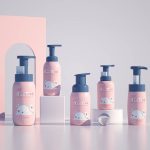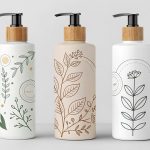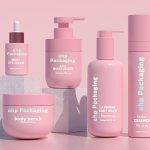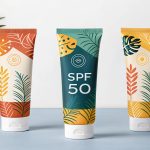Choosing the right lid isn’t just about sealing the product—it’s about usability, safety, and branding. Cosmetic packaging professionals need to understand lid types to elevate both function and consumer appeal.
Cosmetic lids come in various forms including screw-on lids, flip-top lids, press-down lids, pump dispensers, dropper lids, spray nozzles, and snap-on lids. Each type is tailored for specific applications—like cream jars, lotion bottles, or serums—and impacts the user experience, product integrity, and shelf appeal.
Let’s explore the key lid types used in cosmetics and how each one supports different packaging goals, from luxury branding to functional dispensing.
Outline
- 1 What are the different types of lids?
- 2 What are the different types of cosmetic packaging?
- 3 What are the different types of jar lids?
- 4 What are the different types of bottle caps?
- 5 What are Flip Top Caps and where are they used?
- 6 What is the difference between a bottle lid and cap?
- 7 What are Push Pull Bottle Caps used for in cosmetics?
- 8 What are 5 common uses of bottle caps in the beauty industry?
- 9 Summary
What are the different types of lids?
When it comes to cosmetic containers, lids serve more than one role. The most common types include:
- Screw-on lids – These are the most traditional and secure option. They’re used widely for jars and bottles that hold creams, powders, or balms.
- Snap-on lids – Perfect for fast production and easy use. You’ll often see these on compact powders or small balm jars.
- Flip-top lids – These are widely used in haircare and skincare products. They allow one-hand operation and quick dispensing.
- Pump lids – Ideal for lotions, foundations, and liquid cleansers. Pump heads improve hygiene and dosage control.
- Press-down lids – Often found on cleansing oils or facial milks. Press caps balance convenience with security.
- Dropper lids – Used for serums and facial oils, these give a premium feel and precise application.
- Spray nozzles – Essential for body sprays, face mists, and toners.
Each of these lids can be made in materials like plastic, aluminum, or bamboo to suit brand image and sustainability goals.
What are the different types of cosmetic packaging?
Cosmetic lids often pair with specific container styles. Here are a few:
- Jars for creams and scrubs often use screw-on or snap-on lids.
- Bottles for shampoo or toner commonly come with flip-top, disc-top, or pump caps.
- Tubes often have twist-off or flip caps molded directly.
- Airless bottles use specialized pump lids to protect formula from air exposure.
Materials also matter. While plastic is lightweight and affordable, glass and aluminum elevate the look and recyclability. Bamboo lids are trending for eco-conscious branding.
What are the different types of jar lids?
Jars, especially for moisturizers, masks, and eye creams, typically use:
- Screw-top lids – Offer a tight seal and a premium unboxing experience.
- Twist-off lids – Often found in high-volume or value-pack skincare jars.
- Dome lids – These stylish tops add a soft, luxury appearance.
- Double-layered lids – Provide an extra barrier for product protection and a visual edge.
Lid finish options (like matte, glossy, UV coating) help reinforce brand identity on the shelf.
What are the different types of bottle caps?
Cosmetic bottles come in a surprising variety of cap styles. These include:
- Disc-top caps – Press-to-dispense caps perfect for shampoos and cleansers.
- Push-pull caps – Great for body lotions or hand sanitizers.
- Twist caps – Common in spa-style products or DIY refills.
- Child-proof caps – Used for more sensitive products like essential oils.
If the formula is liquid or runny, brands tend to go with disc tops or pumps for precision and mess-free application.
What are Flip Top Caps and where are they used?
Flip top caps are incredibly user-friendly. They’re widely used on shower gels, conditioners, and facial cleansers. These caps prevent spillage, are easy to open with one hand, and offer great flow control. They’re also affordable and can be customized with embossed logos or color accents.
What is the difference between a bottle lid and cap?
In the cosmetic packaging world, the terms “lid” and “cap” are often used interchangeably—but there’s a slight distinction:
- Lid often refers to closures on jars or wide-mouthed containers.
- Cap usually refers to tops on bottles or tubes.
Knowing this can help when sourcing or discussing specs with suppliers. It’s all about the container type.
What are Push Pull Bottle Caps used for in cosmetics?
These caps are popular in larger-format products like body lotions, tonics, or hand wash. A simple “pull to open, push to close” motion makes them great for in-shower or on-the-go use. They’re durable, cost-effective, and often seen in family-size or professional-use packaging.
What are 5 common uses of bottle caps in the beauty industry?
Bottle caps in beauty and personal care serve many purposes:
- Dispensing – Controlled product release for liquids and lotions.
- Sealing – Keep formulas fresh, avoiding oxidation or leakage.
- Branding – Stylish caps add luxury and recognition to a product.
- Protection – Tamper-evident caps ensure safety and trust.
- Portability – Good caps prevent messes in travel and handbag sizes.
Whether for mass market or high-end beauty, a well-designed cap can make or break the customer experience.
Summary
Choosing the right lid enhances not only your product’s usability but also your brand’s value. Got a lid style in mind or need sourcing advice? Let’s talk below!




